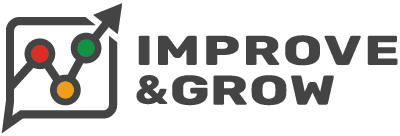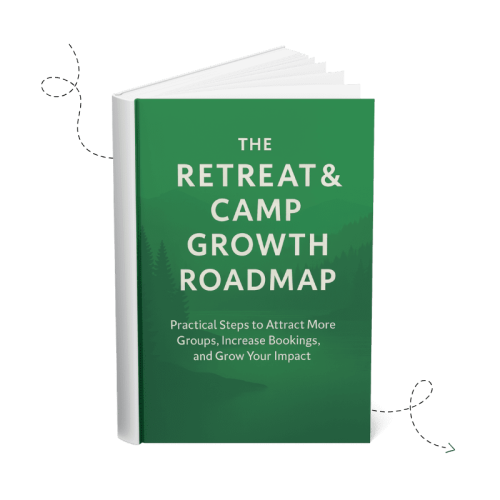Retreat & Camp Growth Roadmap Focus Area: Configure Tracking & Analytics
Introduction
Running a retreat or camp ministry comes with no shortage of responsibilities. But one area that often gets overlooked—especially in the early stages—is tracking and analytics. You might have a website, some contact forms, and maybe even run ads or send emails. But can you confidently answer this question: What’s actually working to bring in new groups?
This focus area is all about helping you answer that question. By setting up clear, intentional tracking systems, you lay the foundation for smarter decisions, better stewardship, and sustainable growth. When you understand what’s working (and what’s not), you can take focused action and multiply your ministry impact.
Why This Focus Area Matters
Good data helps you lead with clarity. When you know how people are finding your retreat center, which channels are producing the best leads, and how inquiries are moving through your pipeline, you can focus on what works—and improve what doesn’t.
This isn’t about turning your ministry into a numbers game. It’s about honoring your mission by using tools that help you serve more people, more effectively. Without proper tracking, you’re left guessing. With the right systems in place, you gain confidence, insight, and the ability to scale wisely.
This section gives you a foundation for why this work matters—not just for growth, but for mission stewardship. Next, let’s look at how to assess whether this focus area needs attention.
Is This a Focus Area You Need to Work On Right Now?
Many retreat centers aren’t intentionally tracking their website or marketing performance—and that’s understandable. But asking a few key questions can reveal whether this area is holding your ministry back.
- Do you have a way to measure website traffic and user engagement?
- Can you identify which sources (Google, social media, referrals) are bringing in the most inquiries?
- Are web forms, phone calls, or chats being tracked and connected to your CRM?
- Can you easily view lead trends or see how many inquiries turn into bookings?
If you answered ‘no’ to any of these, this focus area can help you bring greater clarity, alignment, and impact to your outreach.
Next, we’ll walk through how to apply this focus area in practical steps—starting with the most foundational: Google Analytics.
How to Apply This Focus Area
Tracking and analytics doesn’t have to be overwhelming. You can break it down into three essential building blocks: tracking your website traffic, capturing your conversions, and creating dashboards to monitor your performance. Let’s walk through each.
Set Up Website Analytics
Your website is often the first impression group leaders have of your ministry. But without website analytics, it’s impossible to know how your site is performing. Website analytics tools give you visibility into who’s visiting your site, how they’re getting there, what they’re doing once they arrive, and what actions they’re taking before they leave.
Analytics help you answer important questions like:
- What are my most visited pages?
- Where are my visitors coming from?
- Which calls to action are driving engagement?
- How many people are filling out forms, clicking phone numbers, or starting chats?
These insights help you make informed updates to your website and marketing strategies, so you can serve more guests more effectively.
Recommended Solution
Google Analytics is our top recommendation for most retreat centers. It’s free, widely supported, and powerful enough for nearly any use case. With proper setup, you can:
- Monitor website traffic over time
- Track user engagement and page performance
- Identify your top-performing traffic sources (Google, social, email, etc.)
- Measure conversion events like form submissions, phone calls, and web chats
To track these events effectively, we recommend:
- Redirecting users to a thank-you page after form submissions (easy to track)
- Using a call tracking service with dynamic number insertion that integrates directly with Google Analytics
- Connecting web chat tools to event tracking or CRM integrations
Getting started:
- Visit analytics.google.com to create a free account
- Follow this step-by-step guide to set up and install tracking: Google’s official guide
Once your analytics are set up and configured to track meaningful actions, you’ll have a solid foundation for evaluating and improving your website’s effectiveness.
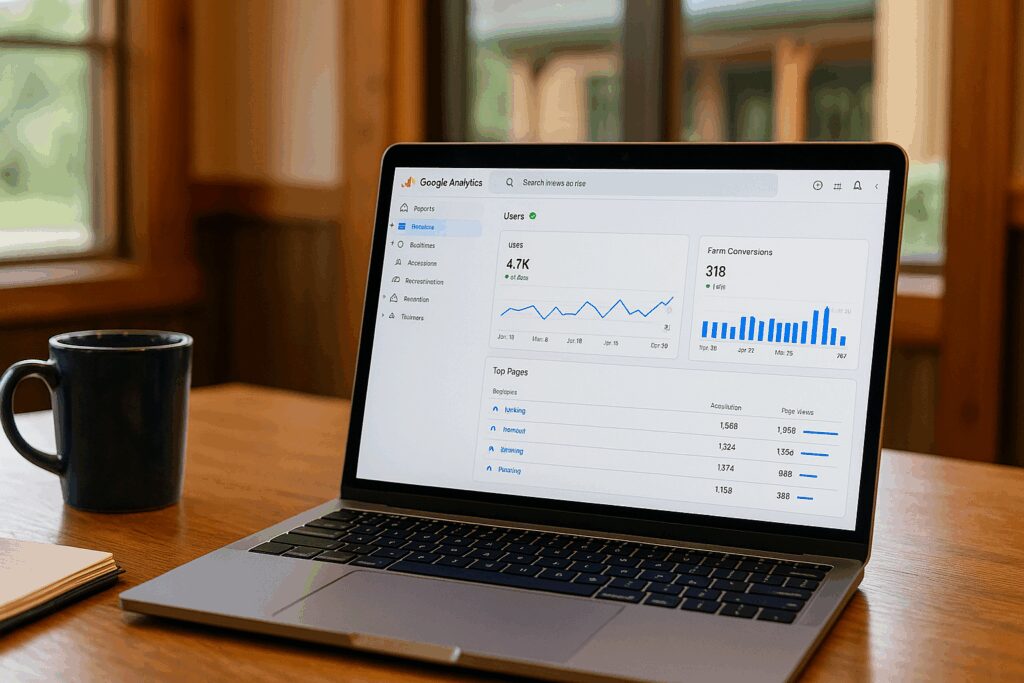
Integrate Web Conversions Directly to Your CRM
Once someone expresses interest through a form, phone call, or chat, it’s essential that this activity is captured in your CRM. Doing so enables full end-to-end lead tracking—helping you see exactly what happens with every lead from inquiry to close. This also helps avoid manual data entry, which can lead to missing data.
Here’s how this works:
- Web Forms: Many CRMs offer form builders that can be added to a website and integrate directly with the CRM. You can also connect existing forms to a CRM using third-party integration tools like Zapier
- Phone Calls: Some CRMs offer built-in call tracking capabilities. If yours doesn’t, you may be able to use a third-party solution like CallRail and integrate with your CRM.
- Live Chat: Some CRMs offer live chat tools that can be added your website, enabling you to capture chat transcripts and contact data in your CRM to maintain a full history of interaction. If yours doesn’t offer that feature, many third-party chat solutions offer CRM integration options.
Recommended Solution:
- LeadHub CRM: Our preferred solution. LeadHub is a CRM that offers built-in form builders, call tracking, and chat tools that make it easy to track and manage every lead in one place. It also integrates directly with Google Analytics and many other marketing platforms, making it easy to see all of your online activity and lead progress in one place. As an added bonus, it can be integrated with existing retreat management systems using third-party integration tools like Zapier.
- Other Alternatives:
- Gravity Forms: If you are using WordPress for your website, Gravity Forms is a great solution for wb forms and integrates easily with Google Analytics and most CRMs.
- CallRail: A strong alternative for call tracking with CRM integration options.
- LiveChat: Another widely used live chat platform, LiveChat offers deep integration with Google Analytics, a wide variety of CRMs, and full support for Zapier. It’s a strong alternative for teams looking for a robust and customizable chat solution with reliable support and advanced tracking capabilities.
With proper integration, you can analyze win rates, response times, and campaign effectiveness—all from your CRM. This creates a seamless connection between marketing, guest services, and leadership visibility.
Once your CRM is capturing web conversions, you can start using dashboards to bring all that data together in one place.
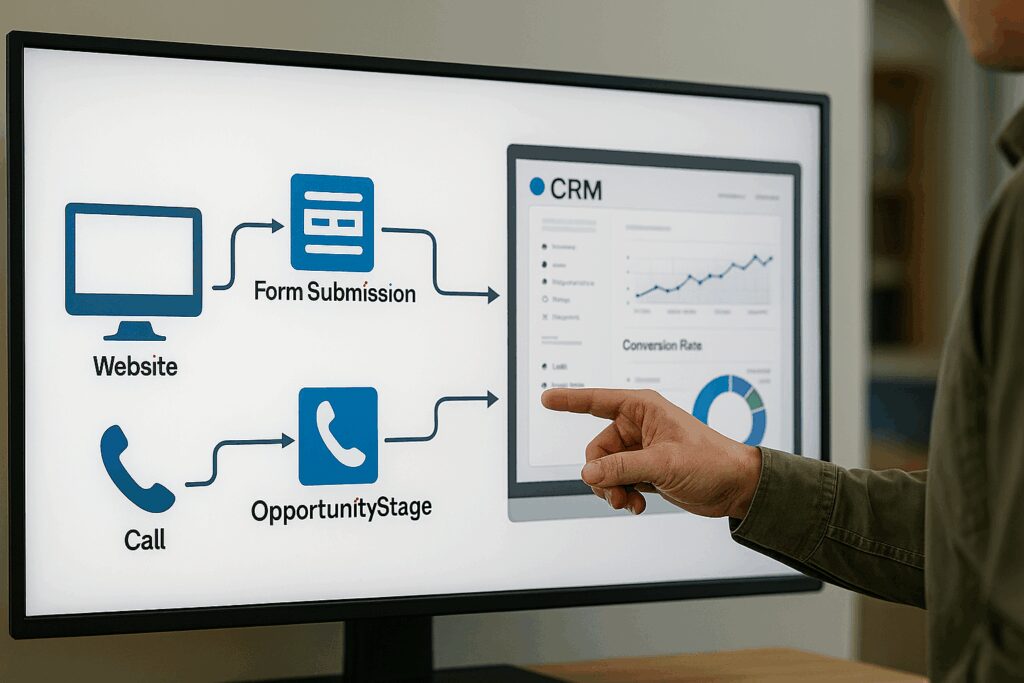
Build Actionable Dashboards
Once your website and CRM are capturing valuable data, the next step is to make that information accessible and usable. That’s where dashboards come in. A dashboard is a central location where you can visualize your most important web and lead activity metrics—so you can spot trends, measure performance, and confidently guide decisions.
Your dashboard should give you clear visibility into website traffic, top-performing pages, lead sources, form submissions, phone calls, CRM activity, and booking status. Instead of relying on scattered reports or spreadsheets, a centralized dashboard brings everything together in one place for easy monthly review.
Recommended Solution
LeadHub is our top recommendation for retreat centers. It includes native integration with most marketing platforms and connects directly to your CRM contact data. It automatically tracks forms, phone calls, and web chats, and presents that data in easy-to-understand dashboards showing:
- Lead activity over time
- Opportunities by stage (inquiry, proposal, booked)
- Source and channel breakdowns
- Status updates (won, lost, in progress)
It also integrates with:
- Google Analytics
- Google Business Profile
- Google Ads
- Facebook & Instagram Pages
- Meta Ads …and more.
Alternative Solutions
If you’re not using LeadHub, Databox is an excellent third-party solution that connects with most CRMs, marketing platforms, and analytics tools. It’s flexible, affordable, and ideal for teams who need to bring together data from multiple systems into a single dashboard view.
Having a dashboard means your team can meet regularly, view the big picture, and make adjustments rooted in real-time data—not assumptions. Now that your tracking is centralized, let’s take a look at additional ministry metrics worth measuring.
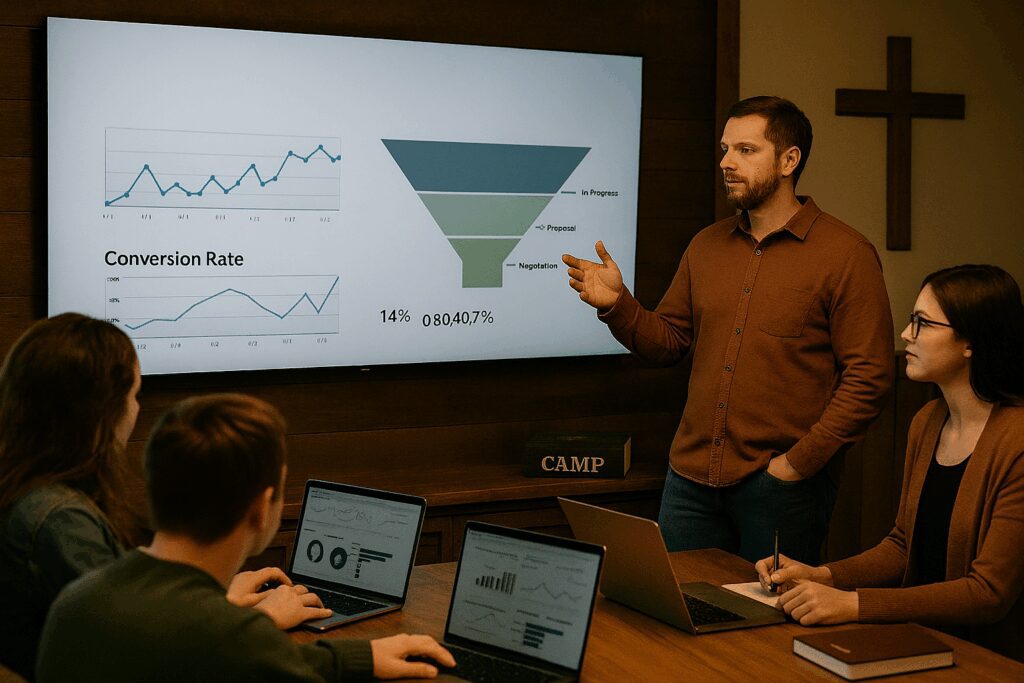
Analytics Setup Checklist
Setting up tracking can feel overwhelming, especially if you’re not naturally tech-inclined. That’s why we’ve created a step-by-step checklist to help you or your team implement the essentials without missing critical details. This tool simplifies the process, so you can make progress with confidence.
📥 Download the Tracking & Analytics Setup Checklist
This resource outlines exactly what to set up, what to track, and how to connect the dots across your website, CRM, and dashboard tools. It’s a practical way to put everything you’ve learned into motion and build a foundation for future success.
Mini Case Study
Refreshing Mountain has embraced tracking and analytics to support sustainable ministry growth. They use Google Analytics to monitor all aspects of website activity, including traffic trends, user engagement, and key conversion events such as website form submissions, phone calls, and live chat sessions.
They utilize LeadHub as their CRM, which integrates seamlessly with both their web forms and communication tools. Every inquiry—whether by form, call, or chat—is tracked within the CRM and tagged by source, allowing them to manage each lead through a defined pipeline. This gives their team full visibility into the status of every inquiry and enables them to analyze win/loss rates and conversion performance at each step of the sales process.
Dashboards built in LeadHub allow Refreshing Mountain to monitor website traffic and web conversions over time, broken down by channel and lead status. These dashboards have surfaced critical insights, including high-converting pages, underperforming ad campaigns, and bottlenecks in the sales process. As a result, they’ve made targeted improvements that have significantly increased their booking performance and operational efficiency.
Other Metrics Worth Tracking
While tracking website and lead activity is essential, it’s just one part of your ministry’s health. To make well-rounded decisions, it’s important to monitor retreat operations, guest experience, and financial performance too.
Here are several areas worth measuring:
Guest and Retreat Activity
- Number of Retreats hosted per month or quarter
- Total Guests Served
- Average Group Size and Average Revenue per Guest
- Rebooking Rate – percent of groups that return
- Guest Satisfaction Scores from surveys
- Review Ratings on platforms like Google
Tracking these helps you understand engagement and experience—both of which affect long-term impact and retention.
Operational Health
- Facility Capacity Utilization – how much of your lodging and meeting space is used
- Staff-to-Guest Ratio during peak vs. off-peak seasons
- Booking Lead Time – how far in advance groups book
- No-Show or Cancellation Rate
- Revenue per Staff Hour
These metrics help identify bottlenecks, staffing needs, and efficiency improvements.
Financial Sustainability
- Total Revenue, Costs, and Net Profit
- Profit Margin as a percentage of revenue
- Revenue by Program Type (youth, leadership, marriage, etc.)
- Off-season vs. Peak-season Performance
- Cost per Guest or per Event
Combining these metrics with your marketing data gives you a complete view of what’s working, where you’re strong, and what needs improvement. You don’t need to track them all—but choose a few that matter most to your goals.
Now that we’ve covered both tracking systems and broader metrics, let’s recap and look at what steps to take next.
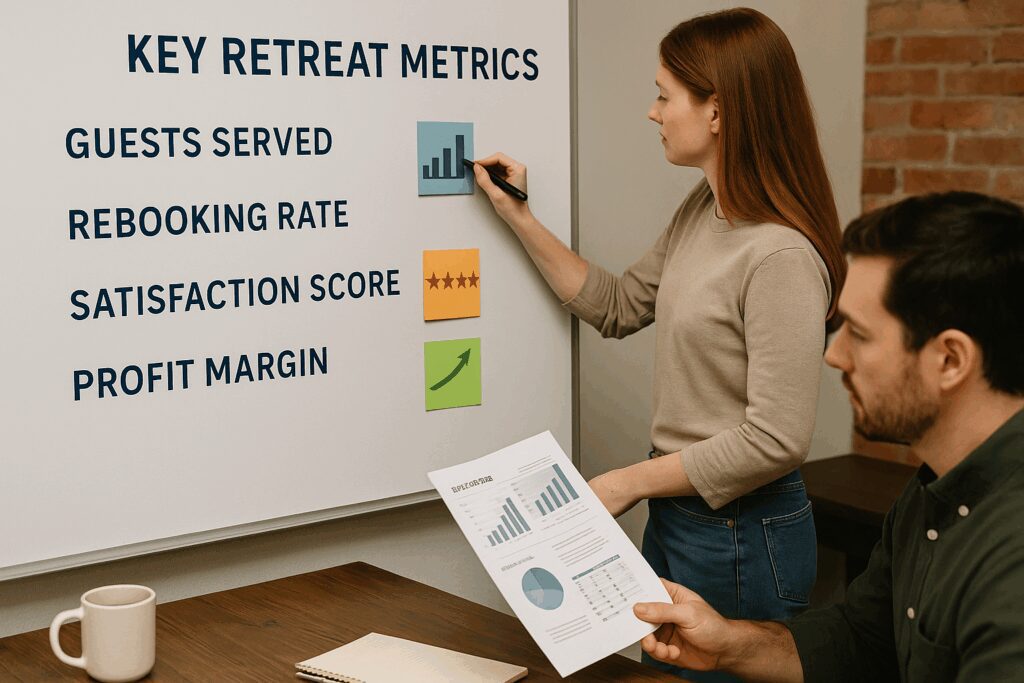
Putting It All Together
Configuring tracking and analytics doesn’t just help you grow—it helps you grow wisely. By tracking traffic, leads, guest activity, and operational outcomes, you create a feedback loop that supports stronger outreach, smarter spending, and better guest experiences.
Start small. Set up what you can, learn from it, and adjust as you grow. Clarity is a gift to your team, your board, and your guests—and it helps your ministry thrive for the long haul.
Let’s wrap up with some actionable next steps.
Practical Takeaways
By now, you’ve seen how tracking the right data can lead to better decisions, greater clarity, and more impactful ministry outcomes. But turning knowledge into action requires a few focused steps to get started.
- Set up a free Google Analytics account and install tracking on your website
- Add thank-you pages to all forms and configure key events for each page in Google Analytics
- Install call tracking and integrate with Google Analytics
- Connect your forms and calls to your CRM
- Use LeadHub or Databox for dashboards
- Track operational, guest, and financial metrics monthly
- Review and adjust regularly based on data
These takeaways give you a solid launch point. Let’s now turn to a few final thoughts and helpful resources as you continue your growth journey.
Final Thoughts & Next Steps
This focus area might not be flashy—but it’s foundational. When you track the right things, you can stop guessing and start growing with purpose. Whether you’re just getting started or formalizing your approach, building a clear, centralized system for tracking will equip your team to lead wisely and steward growth faithfully.
Ready to Take the Next Step?
Having clear tracking in place is one of the smartest investments you can make in your retreat center’s growth. It doesn’t take a massive budget—just a commitment to clarity, stewardship, and strategic thinking.
If you found this helpful, here are four great next steps to continue your journey:
🧭 Move to the Next Focus Area: Enhance Google Listing
Learn how to claim and optimize your Google listing with complete and consistent details.
[Read Enhance Google Listing Article]
📘 Download the Retreat & Camp Growth Roadmap eBook
Get the full 3-stage system we use to help Christian retreat centers and camps grow with clarity and purpose.
[Download the eBook]
🌱 Learn More About How We Help Retreat Centers & Camps
We’re a Christian-owned marketing agency that helps ministries grow attendance, bookings, and impact through practical strategies rooted in clarity and stewardship.
[See How We Can Help]
🤝 Schedule a Free Discovery Call
Want help applying this to your unique situation? Let’s talk. We’ll explore where you are now, where you want to go, and how to take the next faithful step.
[Book a Discovery Call]
You don’t have to figure this out alone. Let’s build something meaningful—together.
Frequently Asked Questions
1. How do I learn to use Google Analytics? Google Analytics is completely free and provides robust data about website traffic, engagement, and conversions, but it can seem overwhelming at first. Start by learning the basics—how to navigate the dashboard, interpret reports, and track key events like form submissions or page views. For a clear, beginner-friendly introduction, check out this free guide: How to use Google Analytics for beginners. It walks you through the fundamentals and helps you start measuring what matters most.
2. How do I track form submissions on my website?
There are several methods, but the simplest is to redirect users to a unique thank-you page after submission. Visits to these pages can be tracked as key conversion events in Google Analytics. You can also connect these forms to your CRM either using forms generated by the CRM or through integrations via third party integration platforms like Zapier.
3. How can I track phone calls from the website in my CRM?
Some CRMs, like LeadHub, come with call tracking capabilities. If your CRM doesn’t, CallRail is a great call tracking solution that integrates with most popular CRMs directly or via a third-party integration tool like Zapier.
4. What is LeadHub, and how do I get it?
LeadHub is a CRM and tracking tool designed for retreat centers. It offers call tracking, form integration, and built-in dashboards. It also offers a full-suite of CRM, Marketing, Automation, and AI tools. Visit the LeadHub CRM website to learn more about LeadHub and how to get started.
5. What if I already use a Retreat Management System as my CRM? If your Retreat Management System (RMS) already functions as a CRM, you may still be able to integrate it with tools like LeadHub or CallRail using Zapier or other middleware. The key is to ensure that all key web conversions—forms, calls, and chats—can flow into your RMS in a structured way that allows you to track and manage leads effectively. If direct integration isn’t possible, many teams create automated workflows to pass data between systems so that nothing falls through the cracks. Whether your RMS is fully featured or limited in CRM capabilities, adding lead tracking and reporting tools can help you get better visibility into your outreach effectiveness and booking pipeline.
6. How can I tell where my leads are coming from? To accurately determine where your leads are coming from, you’ll need to track their journey from initial website visit to final inquiry. This is typically done by combining tools like thank-you pages (for form tracking), phone tracking numbers (that change based on the traffic source), and CRM tagging (to store the original lead source). When set up properly, these tools can tell you whether a lead came from Google search, a specific ad campaign, an email, or even a referral link. This insight allows you to optimize your outreach efforts by focusing on the channels that are driving the most effective results. Over time, it helps you allocate your time and budget more wisely, ensuring better stewardship of your marketing resources.
7. How often should I check my dashboard? A monthly review is ideal for spotting trends, uncovering anomalies, and making informed adjustments to your marketing or operational strategies. It helps you stay aligned with your goals and ensures you’re responding to real data—not assumptions. During peak seasons or after major campaigns, a weekly check-in can provide more immediate feedback and enable quicker decision-making. Some retreat centers even include dashboards in regular staff meetings to promote visibility and shared accountability. The key is to review your data consistently so your team can act with clarity and confidence.
8. What if I don’t have time to do all this setup myself? You don’t have to do this alone. Many retreat centers assign an internal staff member to lead the setup process—especially someone comfortable with tech or systems. Others choose to partner with outside experts who specialize in marketing analytics for ministries. If you need a trusted partner, our team at Improve & Grow is here to help. We specialize in configuring tracking, CRM integration, and dashboards specifically for Christian retreat centers.
9. Can I use dashboards if I don’t use LeadHub? Yes. You can still create dashboards using alternative tools. Many retreat centers use spreadsheets to manually compile key data from their website and CRM. For more advanced automation and visualizations, third-party solutions like Databox are a great option. Databox is flexible, affordable, and connects to a wide variety of marketing platforms and CRMs. It allows you to centralize data from multiple systems into a single, easy-to-use dashboard for ongoing visibility and reporting.
10. Will tracking really help us get more bookings? Yes—indirectly, but significantly. When you have clear tracking in place, you gain visibility into what’s actually working—whether it’s your website content, ad campaigns, referral sources, or follow-up processes. This allows you to focus more energy and resources on the channels and tactics that produce real results. It also helps identify bottlenecks or weak spots in your sales process so you can fix them before they cost you bookings. Over time, this clarity can lead to more inquiries, better guest experiences, and ultimately, a stronger pipeline of group bookings.
